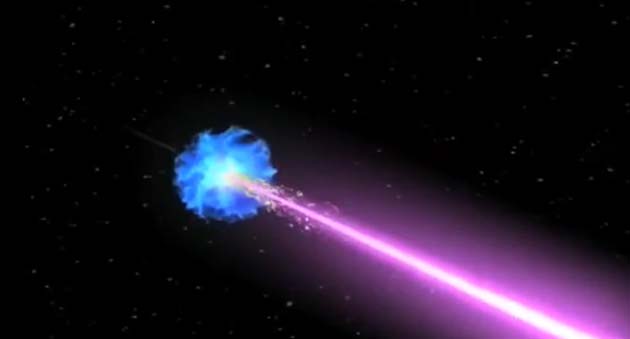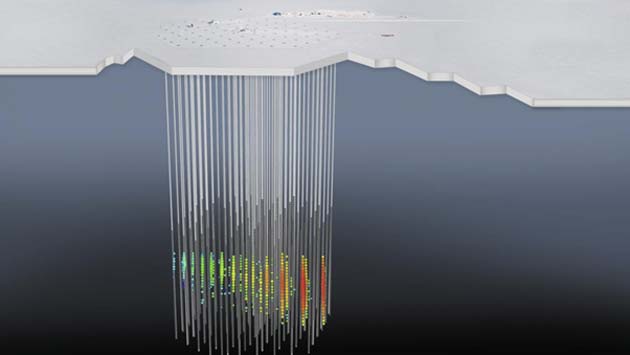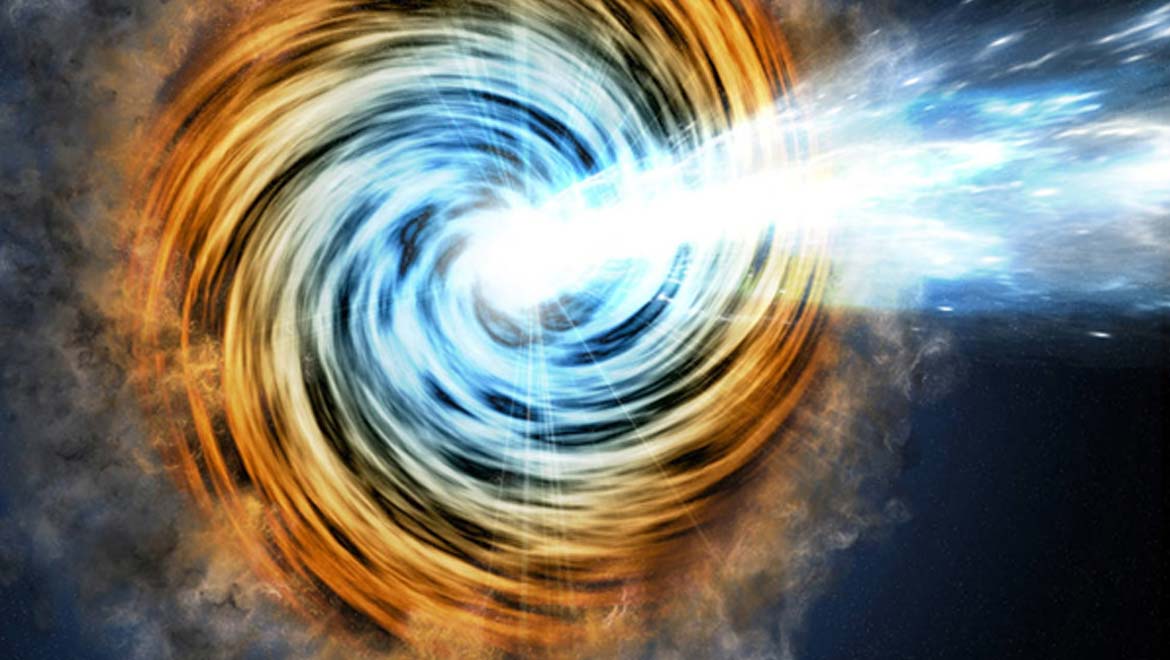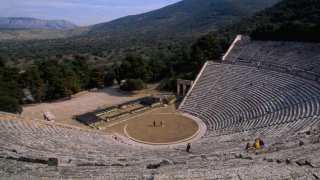Astronomers and astrophysicists have known, for over a century, that the Earth is being bombarded with cosmic rays. However, without advanced equipment and technique, it could not be said for sure from where these rays emanated.
Researchers from a multi-group project have reported the detection of particles that make up these cosmic rays. Furthermore, they also have a source for these rays.
According to the paper based on this data, which is available in the journal Science, the particles emanate from a blazar. A blazar is a type of galaxy with a central black hole that spins at high speed and spews streams of neutrinos in opposing directions.
The blazar in question, designated TXS 0506+056, points one of its streams in the direction of Earth. This, as it now seems, could be the reason that Earth has been pelted with inexplicable ghost particles. These particles, as the new Science article has confirmed, are made of neutrinos.
Earth, The Neutrino Punching Bag
It is not exactly atypical for the Earth to be hit by neutrinos from outer space. However, scientists have been able to define two separate sources for these particles in the past: the supernova 1987A and our own sun.
However, neutrinos emanating from these locations differed sufficiently from ‘ghost particles’ for them to be acknowledged as a discrete, much more mysterious form of cosmic ray. For one thing, the ghost neutrinos have relatively high energy and hit the Earth in a more diffuse stream. Scientists were not able to confirm the origin of these particles for decades, although some suspected that a blazar might be the culprit.

Supernovas may also be sources of cosmic rays. (Source: NASA)
Cosmic Particles on Ice
However, the astrophysical community has since acquired the tools necessary to detect ghost particles with increased accuracy and track them back to their source. They mainly comprised the IceCube Neutrino Observatory, the Neil Gehrels Swift Observatory, and the HESS gamma-ray telescope.
The Swift Observatory orbits the planet while the HESS telescope is located in Namibia and the IceCube observatory is located in the Antarctic or, in fact, under this region. This is because the IceCube requires ultra-pure ice in order to analyze neutrinos. Therefore, one of its main components is a cubic kilometer of this ice, under the continent’s surface, near the NSF South Pole research station.
This ice also houses 60 digital optical modules mounted on thin vertical wires, each of which are set 125 meters apart within the ice. When a neutrino hits an atom or strikes in the vicinity of one of the modules, a muon is produced. This particle travels through the ice at an optimal speed to generate Cherenkov radiation. The rays are detected by the module, which results in the activation of a high-speed messaging system.
Now, this system helps to contact a number of relevant institutions worldwide, which is how people can be alerted to the presence of a ghost particle, as soon as possible.

An artist’s impression of the IceCube optical module array interacting with a neutrino. (Source: IceCube Collaboration/NSF)
This early-warning system also enables other instruments and centers that are best equipped to assess the particle(s), detected by IceCube, to deploy and co-ordinate in a timely manner. For example, the Swift’s X-ray sensor (which was designed and provisioned by a team at the University of Leicester in the UK) was best placed to observe the blazar activity linked to this particularly high-energy event.
Capturing the Ghost Particle
The IceCube had a window between April and October in 2017 to detect neutrinos issuing from the blazar. On the 22nd of September, it finally captured this data, which corresponded to the high-energy particle designated IceCube-170922A.
The neutrinos hit the Earth with an energy of about 290 teraelectronvolts (eVs). Concurrently, the Swift and HESS instruments detected signs (e.g., gamma rays) consistent with flaring (the emission of cosmic rays) in TXS 0506+056.
Both events were likely to be associated from a statistical and positional standpoint, according to the study authors.
The scientists and staff behind this project assert that this discovery puts them in a very good position to detect the next barrage of cosmic rays, or other similar events such as gravitational waves emanating from galaxies such as blazars.
In the meantime, we can enjoy the achievement of having found a concrete explanation for the so-called ghost particles!
Top Image: Artistic conception of what a blazar looks like. (Source: JPL/NASA)







No comment